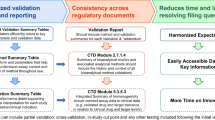Abstract
To compare the efficacy of immunoglobulin replacement therapy given intravenously versus subcutaneously to prevent infections in patients with primary antibody deficiency syndromes, an international, multicenter, open label, crossover study was designed. Forty patients were randomized to receive either subcutaneous or intravenous immunoglobulin replacement therapy for 1 year. In the second year, patients were switched to the alternative treatment, enabling patients to act as their own controls. Equivalent doses were given by both routes. Ethical approval was obtained from the review boards of the hospitals in which the patients were seen and written consent obtained from each patient. Patients with a primary antibody deficiency syndrome, either common variable immunodeficiency or IgG subclass deficiency or specific antibody deficiency, who required immunoglobulin replacement therapy were included in the study. Patients were excluded if they had significant thrombocytopenia (defined as platelets less than 50 × 109/liter), had high levels of anti-IgA antibodies (defined as greater than 1:8192), or had severe adverse reactions to a blood product within the last 2 years. The primary end point was the number of infections and their severity (moderate and major) during the two treatment periods. Secondary end points were adverse reactions, length of infections, days lost from school or work due to infections, and acceptability of treatment regimens to the patients. Based on the assumption that it was difficult to prove equivalence of therapies statistically in crossover studies, an arbitrary number of 40 patients was selected on the basis that this might be achievable in 2 years. There are no significant differences in efficacy or adverse reaction rates between immunoglobulin replacement therapy given subcutaneously or intravenously.
Similar content being viewed by others
REFERENCES
Chapel HM for the Consensus Panel for the Diagnosis and Management of Primary Antibody Deficiencies: Consensus on diagnosis and management of primary antibody deficiencies. Br Med J 308:581-585, 1994
Roifman CM, Levison H, Gelfand EW: High dose versus low dose intravenous immunoglobulin in hypogammaglobulinaemia and chronic lung disease. Lancet 1:1075-1077, 1987
Spickett GP, Misbah SA, Chapel HM: Primary antibody deficiency in adults. Lancet 337:281-284, 1991
Ochs HD, Fischer SH, Lee ML, Delson ES, Kingdon HS, Wedgwood RJ: Intravenous immunoglobulin home treatment for patients with primary immunodeficiency diseases. Lancet 1:610-611, 1986
Ashida ER, Saxon A: Home intravenous immunoglobulin therapy by self-administration. J Clin Immunol 6:306-309, 1986
Chapel HM, Brennan VM, Delson E: Immunoglobulin replacement therapy by self-infusion at home. Clin Exp Immunol 73:160-162, 1988
Gardulf A, Hammarstrom L, Smith CIE: Home treatment of hypogammaglobulinaemia with subcutaneous gammaglobulin for rapid infusion. Lancet 338:162-166, 1991
Gardulf A, Andersen V, Bjorkander J, Ericson D, Froland SS, Gustafson R, Hammarstrom L, Jacobsen MB, Jonsson E, Moller G, Nystrom T, Soeberg B, Smith CIE: Subcutaneous immunoglobulin replacement in patients with primary antibody deficiencies: Safety and costs. Lancet 345:365-369, 1995
Thomas M, Brennan VM, Chapel HM: Rapid subcutaneous immunoglobulin in children. Lancet 342:1432-1433, 1993
Berger M, Cupps T, Fauci A: Immunoglobulin replacement therapy by slow subcutaneous infusion. Ann Intern Med 93:55-56, 1980
Ugazio AG, Duse M, Re R, Mangili G, Burgio GR: Subcutaneous infusion of gammaglobulins in management of agammaglobulinemia. Lancet 1:226-226, 1982
Report of WHO Scientific Group: Primary immunodeficiency diseases. Clin Exp Immunol 109(suppl 1), August 1997
BjÖrkander J, HammarstrÖm L, Smith CL, Buckley RH, Cunningham-Rundles C, Hanson LA, Immunoglobulin prophylaxis in patients with antibody deficiency syndromes and anti-IgA antibodies. J Clin Immunol 7:8-15, 1987
Co-operative Group for the Study of Immunoglobulin Chronic Lymphocytic Leukemia: Intravenous immunoglobulin for the prevention of infection in chronic lymphocytic leukemia. A randomized, controlled clinical trial. N Engl J Med 319:902-907, 1988
Misbah SA, Chapel HM: Adverse effects of intravenous immunoglobulin. Drug Safety 9(4):254-262, 1993
Stiehm ER: Slow subcutaneous human intravenous immunoglobulin in the treatment of antibody immunodeficiency: Use of an old method with a new product. J Allergy Clin Immunol 101:848-849, 1998
Author information
Authors and Affiliations
Rights and permissions
About this article
Cite this article
Chapel, H.M., Spickett, G.P., Ericson, D. et al. The Comparison of the Efficacy and Safety of Intravenous Versus Subcutaneous Immunoglobulin Replacement Therapy. J Clin Immunol 20, 94–100 (2000). https://doi.org/10.1023/A:1006678312925
Issue Date:
DOI: https://doi.org/10.1023/A:1006678312925




